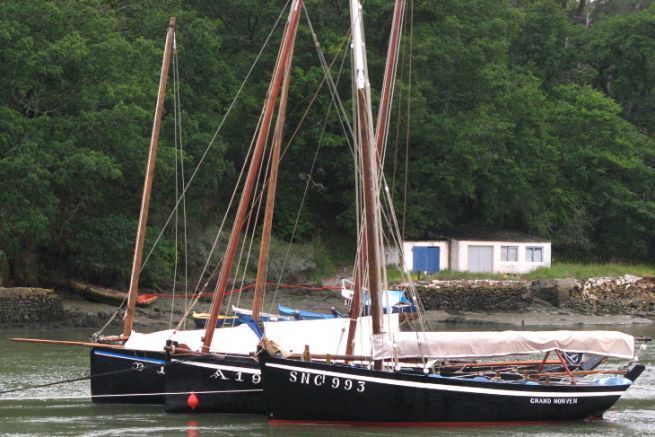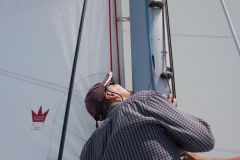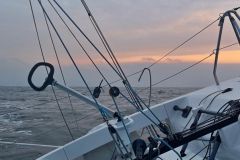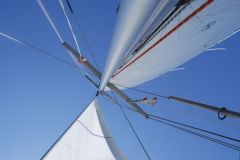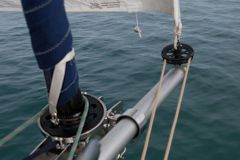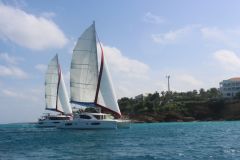A mast not always vertical
If you look at the sailboats from the quay, you will quickly notice that the masts of the boats are not always vertical. They form an angle with the vertical, called the rake, which is either aft, most often when the rake is positive, and more rarely forward in the case of a negative rake.
There are, of course, a number of boats whose masts are tilted back several degrees for purely aesthetic (or fashion) reasons. However, structural considerations are often the reason for a significant quest.
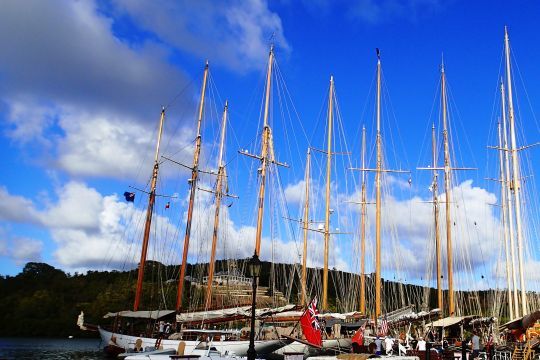
It all starts with the design of the structure
When you design a boat, you plan a framework for it so that you get a homogeneous and solid hull. This means that there are areas that are mainly used for waterproofing and others that have a more important structural role. This is the case of the area that receives the mast step, as well as those that receive the appendages: keel, daggerboard, foil, rudder ... They are reinforced to take up these efforts.
Balance between hull and sail center
Depending on its appendages and shape, the hull of a boat has a center of drift. For the proper balance of the ship under sail, there is a relationship to be established between the respective positions of this center of drift and the center of buoyancy (which is the resultant of the action of the wind on the sails). Depending on the longitudinal distance between these points, the steering behavior will be different. The quest, by moving these surfaces has an essential role in this behavior.
Hot or soft sailboat
A sailboat is said to be fiery when it has a natural tendency to rise to windward when you let go of the helm. A soft boat does exactly the opposite, it falls downwind if you don't push the bar. A good sailboat, which goes upwind correctly, must be a bit lively.
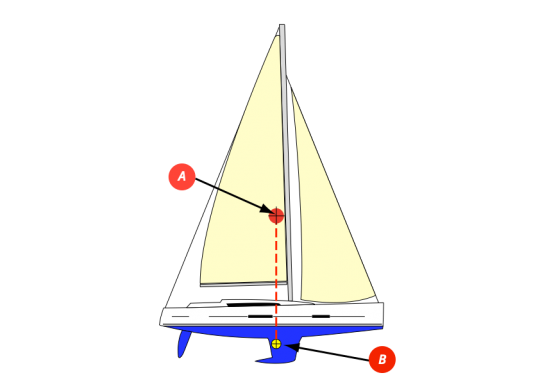
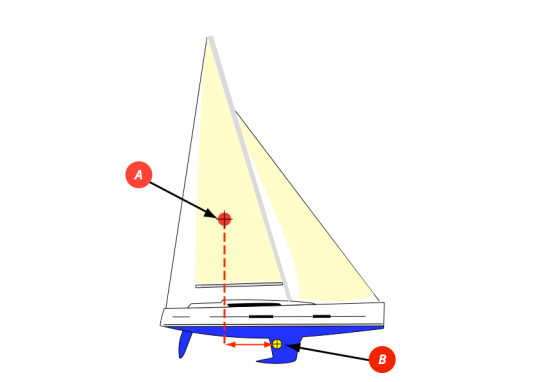
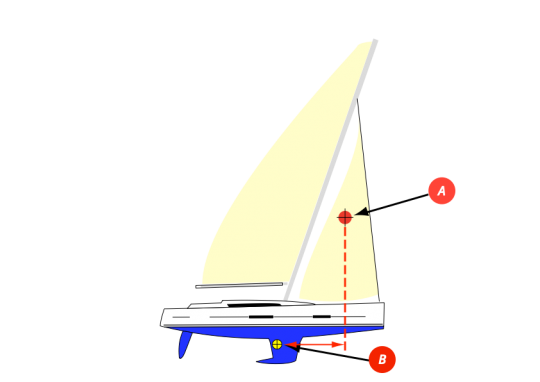

Adjusting the structure of the boat and positioning of the sail and daggerboard surfaces
Heavily reinforced structural areas weigh more than "simple planking", so it is essential to position them judiciously for good weight balance. In addition, they can take up space at the expense of other spaces that affect comfort on board or the ability to accommodate cargo.
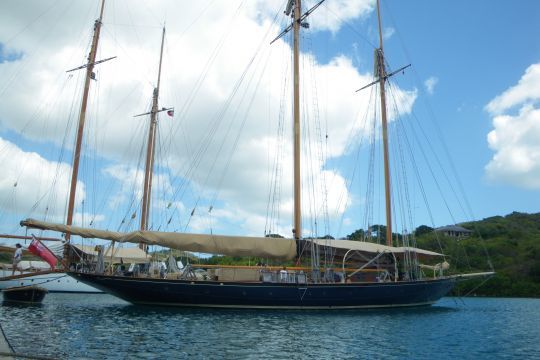
One of the most striking cases is that of the mast. If, for structural reasons, it could not be placed where it should have been, it is possible to get around the problem by placing it a little further forward or aft. It is then necessary to play on the quest to replace the center of sail in concordance with the centerboard, slightly behind the latter.
If the mast is moved back, a negative quest will be added to move the center of sail forward. If the mast is forward, a positive quest will be added to move the center of sail back.
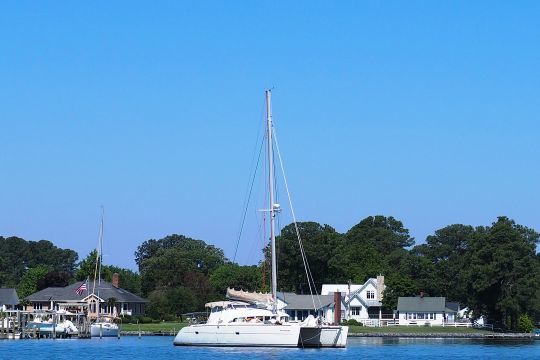
Using the quest to set the rig
In the old days (but not so long ago), sailboat builders did not have the technical means available today to adjust sails and rigging. So, the masts were raked to facilitate the tension of the forestay at points of sail close to the wind. When the spars were heavy (made of solid wood), it made sense.
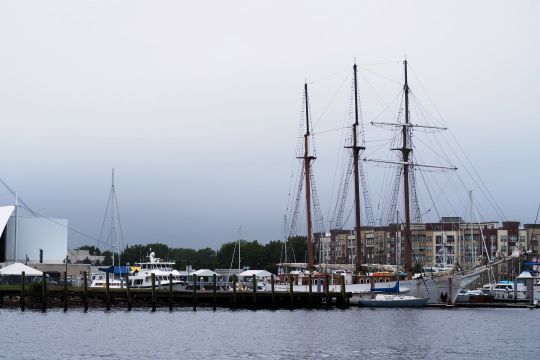
While giving quest to a carbon mast in order to improve the tension of the forestay would be a bit far-fetched...
Currently, the tendency is to give the masts a verticality that is certainly a bit austere, but reasonably effective. This is simply to get fresh wind as high as possible. The cruising enthusiast willingly disregards the meager advantages obtained by "working" the search for his main spar.
Optimize your sailboat by adjusting the quest
However, you can use the Quest to adjust the balance under sail of any boat when necessary. On a slack boat, you can increase the rake aft to make it a bit better upwind. It is much more efficient to "hold back", at the helm, a boat that only wants to go upwind than to force a boat that only knows how to slaughter... Especially when you are sailing close-hauled.
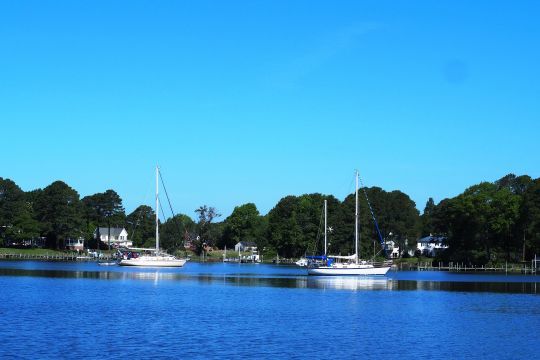
This subtle, but very acrobatic practice is still widely used by racers. The best sailors find it a way to make up a few hundredths of a knot upwind. And it also allows them to delay the inevitable luffing (or downwind) under spinnaker in the breeze.
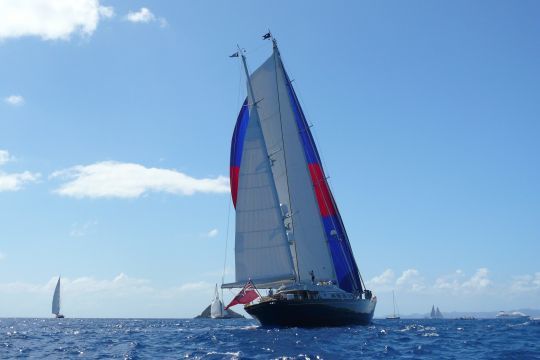

 /
/ 